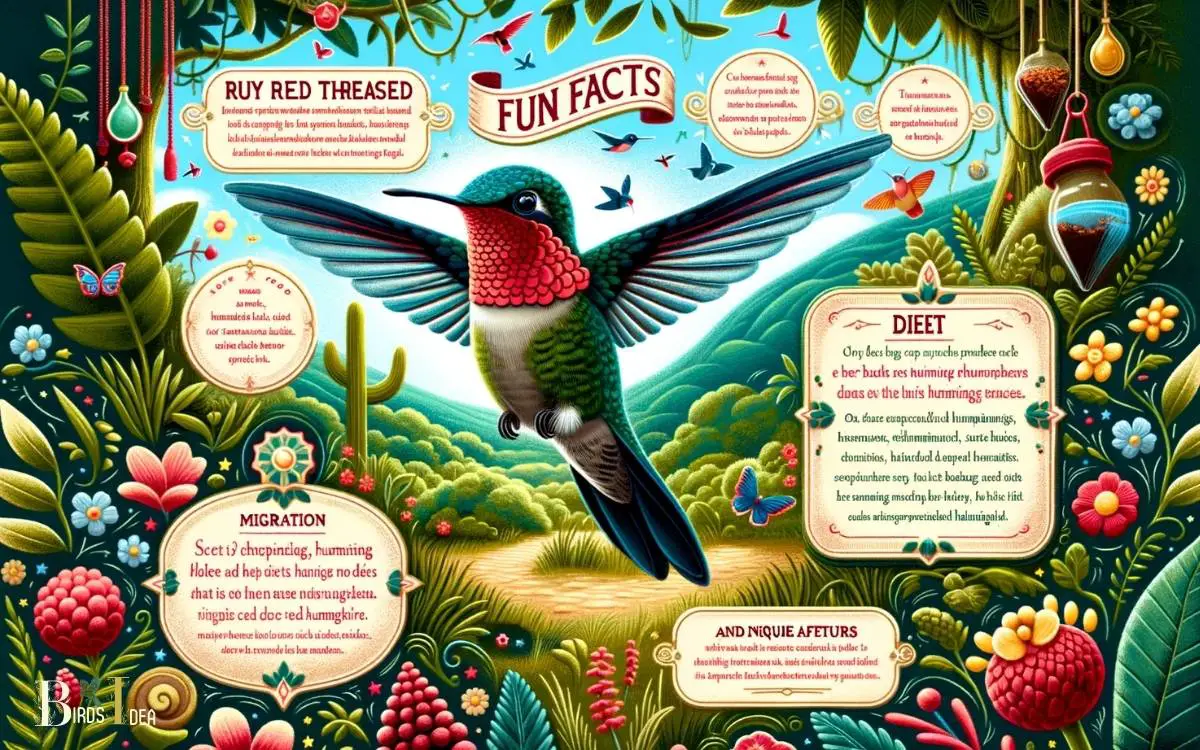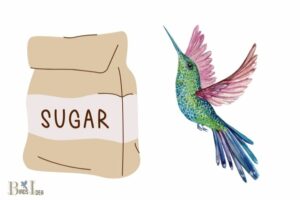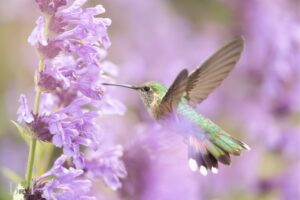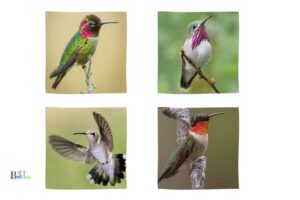Ruby Red Throated Hummingbird Facts: Explore!
The Ruby-throated Hummingbird, scientifically known as Archilochus colubris, is a small bird species renowned for its vibrant ruby-red throat and agile flight.
As a migratory bird, it travels extensively between North America and Central America. Primarily feeding on nectar, the Ruby-throated Hummingbird also consumes insects and tree sap, serving as a critical pollinator in many ecosystems.
The Ruby-throated Hummingbird is the only species of hummingbird that breeds in Eastern North America.
They are often recognized by the iridescent ruby red throat patch, or gorget, found in males, which is used to attract females during breeding season. Females, however, lack this bright coloring and have a more subdued throat.
Here are some key facts:
These birds are adept at hovering, thanks to their rapid wing flaps, which can beat over 50 times per second. This ability allows them to access nectar while airborne.
With their brilliant red throats and acrobatic flying, Ruby-throated Hummingbirds are a dazzling sight in gardens across their range, embodying the grace

Key Takeaway
Physical Characteristics
The Ruby Red Throated Hummingbird is known for its vibrant plumage and small size, making it a distinctive member of the hummingbird family.
With a length of 7-9 cm and a wingspan of 11 cm, this species is one of the smallest birds in the world. Its iridescent ruby red throat, known as a gorget, is a prominent feature of the male, while the female has a more subdued coloration.
Their tiny size and rapid wingbeats, averaging 53 beats per second, allow them to hover in mid-air and fly in any direction with precision.
These birds have a slender, needle-like bill that is perfectly adapted for feeding on nectar from flowers. The Ruby Red Throated Hummingbird’s physical characteristics enable it to thrive in diverse habitats throughout its range.
Habitat and Range
Inhabiting a wide range from southern Canada to central America, the Ruby Red Throated Hummingbird can be found in various habitats, including forests, woodlands, and gardens.
- Witnessing these tiny birds darting among the flowers in a garden is a delightful sight for nature enthusiasts.
- The serene beauty of a hummingbird hovering amidst the trees in a woodland setting is a captivating experience.
- Observing these vibrant creatures flitting through the foliage of a forest evokes a sense of wonder and appreciation for the natural world.
- The enchanting presence of a Ruby Red Throated Hummingbird in a backyard, with its iridescent plumage catching the sunlight, brings a sense of joy and tranquility to any observer.
Feeding Behavior
Darting among the flowers in gardens, woodlands, and forests, the Ruby Red Throated Hummingbird displays a distinct feeding behavior characterized by its agile and rapid movements.
These tiny birds primarily feed on flower nectar, but they also consume insects and tree sap.
The table below provides a summary of the Ruby Red Throated Hummingbird’s feeding behavior.
| Feeding Behavior | Details |
|---|---|
| Primary Diet | Flower nectar, providing essential sugars |
| Additional Diet | Insects, such as mosquitoes, fruit flies, and ants |
| Feeding Technique | Hovering in front of flowers, using their long, specialized beaks to reach nectar |
| Feeding Frequency | Visit hundreds of flowers daily, requiring frequent feeding to sustain their high metabolism |
| Territory Defense | Aggressively protect feeding areas from other hummingbirds and intruders |
These remarkable birds have adapted unique feeding techniques and dietary habits to thrive in their natural habitats.
Breeding and Nesting
Displaying remarkable adaptability, Ruby Red Throated Hummingbirds establish their breeding and nesting grounds in diverse environments, showcasing their resilience and resourcefulness.
The breeding season typically occurs from late spring to early summer, with the female hummingbird being solely responsible for constructing the nest using materials such as plant fibers, downy feathers, and spider silk.
The nest is often camouflaged with lichens and moss, providing protection from predators. The female lays two eggs, each about the size of a coffee bean, and diligently incubates them for approximately 14-16 days.
Once hatched, the mother feeds her chicks a diet of nectar and small insects, ensuring their healthy growth and development.
Witnessing the delicate nest-building process and the devoted care provided by the mother hummingbird evokes a sense of wonder and admiration for these tiny yet tenacious creatures.
- Nest construction using delicate materials
- Camouflaging the nest for protection
- Devoted incubation period
- Nurturing care for the hatchlings
Migration Patterns
The migration patterns of the ruby-throated hummingbird involve seasonal flight paths, breeding ground locations, and environmental influences on their migration.
Understanding these patterns is crucial for comprehending the remarkable journey these tiny birds undertake each year.
By examining these factors, we can gain insight into the incredible feats of endurance and navigation that these hummingbirds demonstrate during their migratory journeys.
Seasonal Flight Paths
During the autumn months, Ruby Red Throated Hummingbirds embark on a southward migration journey to their wintering grounds.
These tiny creatures, weighing less than a nickel, undertake an incredible feat of endurance and determination as they navigate their way through challenging terrains and across vast distances.
Their migration is a testament to the remarkable resilience and adaptability of these fascinating birds. It’s a reminder of the awe-inspiring wonders of the natural world and the intricate interconnectedness of ecosystems.
The sight of these vibrant, darting birds in flight serves as a poignant reminder of the fleeting beauty and preciousness of life. Their annual journey symbolizes the enduring spirit of survival and the unyielding call of nature.
Breeding Ground Locations
Breeding ground locations for Ruby Red Throated Hummingbirds vary widely across North America, with these birds exhibiting distinct migration patterns to reach their nesting sites.
During the breeding season, these hummingbirds can be found in eastern North America, from southern Canada to the Gulf of Mexico, and as far west as the Great Plains. They typically breed in open woodlands, forest edges, and sometimes even suburban gardens.
In preparation for migration, these birds undergo a remarkable journey, flying non-stop for up to 18 hours across the Gulf of Mexico, covering approximately 500 miles, to reach their wintering grounds in Central America.
Understanding the specific breeding ground locations and migration patterns is crucial for conservation efforts and for appreciating the remarkable journeys these tiny birds undertake.
Environmental Influences on Migration
Migration patterns of Ruby Red Throated Hummingbirds are influenced by environmental factors such as temperature, food availability, and daylight duration. These factors play a critical role in shaping the hummingbirds’ journey across continents.
The following environmental influences affect their migration patterns:
- Temperature: Hummingbirds migrate to areas with suitable temperatures to avoid extreme cold or heat.
- Food Availability: They follow routes where nectar-rich flowers and insects are abundant for sustenance during the journey.
- Daylight Duration: Longer daylight hours stimulate hormonal changes, prompting hummingbirds to begin migration.
Understanding these influences is crucial for conservation efforts and enhancing habitat protection.
Predators and Threats
The ruby red-throated hummingbird faces numerous predators and threats throughout its natural habitat, making survival a constant challenge.
These tiny birds are susceptible to a variety of predators, including snakes, spiders, larger birds, and domestic cats. Additionally, habitat loss due to deforestation, urbanization, and climate change poses a significant threat to their survival.
The following table outlines some of the key predators and threats that impact the ruby red-throated hummingbird:
| Predators | Threats |
|---|---|
| Snakes | Habitat loss |
| Spiders | Deforestation |
| Larger birds | Urbanization |
| Domestic cats | Climate change |
| Pollution |
Conservation Efforts
Conservation efforts for the ruby-throated hummingbird are crucial for the protection of its habitat. Habitat loss due to deforestation and urban development poses a significant threat to the species, making habitat protection initiatives essential.
Additionally, community involvement in conservation projects plays a vital role in raising awareness and implementing effective measures to safeguard the hummingbird’s environment.
Habitat Protection Crucial
Preservation of suitable habitats is essential for the long-term survival of the ruby red throated hummingbird species.
The following factors highlight the importance of habitat protection for these magnificent creatures:
- Loss of habitat due to deforestation and urbanization threatens their nesting and foraging grounds.
- Climate change is altering the availability of nectar-producing flowers, a crucial food source for hummingbirds.
- Pesticide use in agricultural areas poses a significant risk to the hummingbirds, impacting their food sources and overall health.
- Fragmentation of habitats disrupts migration patterns and can lead to genetic isolation, potentially endangering the species.
Community Involvement Essential
Efforts to safeguard the habitats and well-being of the ruby red throated hummingbird inherently require active participation from local communities and stakeholders.
Conservation efforts must involve engaging communities in habitat restoration, promoting sustainable land use practices, and raising awareness about the importance of preserving hummingbird habitats.
Community involvement is essential for implementing and enforcing regulations that protect the hummingbird’s natural environment from deforestation, pollution, and urbanization.
Local stakeholders, including government agencies, conservation organizations, and landowners, play a vital role in creating and maintaining protected areas for the hummingbird.
Engaging with communities to foster a sense of stewardship for the hummingbird’s habitat is crucial for the long-term survival of this species.
Collaborative efforts between communities and conservation groups are necessary to ensure the preservation of the ruby red throated hummingbird’s natural environment.
Conclusion
The ruby red throated hummingbird is a remarkable bird with a vibrant appearance and impressive feeding and nesting behaviors. Despite facing threats from predators and habitat loss, conservation efforts are being made to protect this beautiful species.
Like a tiny gem in the vast expanse of nature, the ruby red throated hummingbird serves as a symbol of resilience and the importance of preserving the delicate balance of our natural world.






